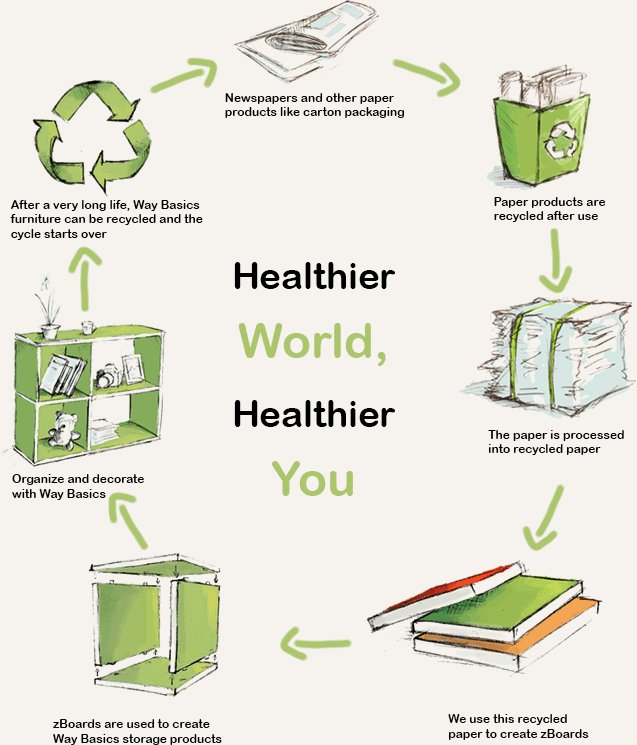Can Eco-Friendly Furniture Reduce Emissions When Flat-Packed?
Can Eco-Friendly Furniture Reduce Emissions When Flat-Packed? The answer is a resounding yes! As sustainability becomes an increasingly crucial aspect of our daily lives, finding innovative solutions to minimize our carbon footprint has become a priority.
One such solution lies in the concept of flat-packed furniture, which not only offers convenience but also has the incredible potential to decrease emissions during transportation.
By breaking down bulky furniture items into flat, space-saving packages, companies can optimize their shipping processes, ultimately reducing the environmental impact associated with transportation.
In this article, we will explore the fascinating world of eco-friendly flat-packed furniture and delve into the ways it can contribute to a greener future.
Can Eco-Friendly Furniture Reduce Emissions When Flat-Packed?
As the world becomes increasingly aware of the environmental impact of human activities, the demand for eco-friendly alternatives is on the rise. One such area where sustainability is gaining momentum is in the furniture industry. Consumers and manufacturers alike are exploring ways to reduce the carbon footprint associated with furniture production and transportation. One innovative solution that has emerged is the concept of shipping eco-friendly furniture flat-packed. In this article, we will delve into the potential benefits and challenges of this approach, exploring how it can contribute to reducing emissions and creating a more sustainable future.
The Rise of Eco-Friendly Furniture
Over the years, there has been a growing awareness of the negative environmental impact of traditional furniture manufacturing practices. The production of conventional furniture involves the use of large amounts of resources, such as timber, which can contribute to deforestation and habitat destruction. Moreover, the transportation of fully assembled furniture items adds to the carbon emissions generated by the industry.
Eco-friendly furniture, on the other hand, offers a more sustainable alternative. It is typically made from recycled or renewable materials, minimizing the extraction of new resources. Additionally, eco-friendly furniture often incorporates design principles that prioritize longevity and recyclability.
Understanding Flat-Packed Furniture
Flat-packed furniture refers to items that are disassembled and packaged in a flat, compact form for easy transportation and storage. The pieces are usually accompanied by clear assembly instructions, allowing consumers to reconstruct the furniture at their desired location. This approach offers several advantages in terms of reducing emissions, logistics, and affordability.
Benefits of Flat-Packed Furniture
- Reduced Emissions: By shipping furniture in a flat-packed form, manufacturers can optimize the use of space in shipping containers or vehicles. This results in fewer shipments and less fuel consumption, ultimately reducing carbon emissions.
- Lower Transportation Costs: Shipping fully assembled furniture requires more space, which translates into higher transportation costs. Flat-packed furniture takes up less room, enabling manufacturers to transport larger quantities at a lower cost.
- Easier Storage: Flat-packed furniture is much easier to store compared to fully assembled items. The compact packaging saves space in warehouses and stores, allowing retailers to stock a greater variety of furniture options without requiring excessive storage capacity.
- Convenience for Consumers: Flat-packed furniture offers convenience for consumers who may need to transport furniture through narrow doorways, staircases, or elevators. It is also more portable, making it suitable for individuals who frequently move or relocate.
Challenges and Limitations
While flat-packed furniture presents numerous advantages, it is important to acknowledge the challenges and limitations associated with this shipping method.
- Assembly Time and Complexity: Assembling flat-packed furniture can sometimes be time-consuming and require a certain level of technical skill. While manufacturers strive to provide clear instructions, some consumers may find the process daunting or opt for fully assembled furniture instead.
- Quality and Durability: Despite advancements in design and manufacturing techniques, concerns about the quality and durability of flat-packed furniture still persist. Some consumers may perceive these pieces as less sturdy compared to fully assembled counterparts.
- Design Limitations: The packaging constraints of flat-packed furniture can influence the design choices and limit the aesthetic options for manufacturers. Some designs might not be suitable for disassembly and flat-packing, resulting in a narrower range of options for consumers.
- Limited Customization: Flat-packed furniture is often produced in standardized sizes and configurations to optimize packaging and transportation. This can limit the level of customization available to consumers who desire unique furniture pieces tailored to their specific needs.
Sustainable Practices in Flat-Packed Furniture Production
To further enhance the sustainability of the flat-packed furniture industry, manufacturers are implementing various practices aimed at minimizing waste, reducing emissions, and promoting circular economy principles.
Use of Recycled Materials
Many eco-friendly furniture manufacturers prioritize the use of recycled or upcycled materials in their production processes. This not only reduces the demand for new resources but also diverts waste from ending up in landfills.
Efficient Packaging
Efficient packaging plays a crucial role in reducing the environmental impact of flat-packed furniture. Manufacturers are exploring alternative packaging materials, such as biodegradable or compostable options, to minimize the use of plastic and other non-recyclable materials.
Design for Disassembly
To facilitate easy assembly and disassembly, furniture designers are incorporating innovative techniques and connectors. Designing furniture with disassembly in mind allows for easier recycling or reuse of components, reducing waste and extending the lifecycle of the furniture.
Local Production
By establishing production facilities closer to the consumer, manufacturers can minimize transportation distances and associated emissions. Local production also enables more direct engagement with customers, promoting transparency and accountability in the manufacturing process.
Collaboration with Delivery Partners
To streamline logistics and reduce emissions further, furniture companies are partnering with delivery services that prioritize eco-friendly practices. This collaboration ensures that the entire supply chain, from production to transportation, aligns with sustainability objectives.
Sustainable packaging line for packing panels and disassembled furniture
Frequently Asked Questions
Can eco-friendly furniture be shipped flat-packed to reduce emissions?
Yes, eco-friendly furniture can be shipped flat-packed to reduce emissions. Flat-packed furniture is designed to be disassembled and shipped in a compact form, requiring less space and reducing transportation emissions. By eliminating the need for bulky packaging and optimizing space usage, flat-packed furniture helps to minimize the carbon footprint associated with shipping and transportation.
Are there any benefits to shipping eco-friendly furniture flat-packed?
Shipping eco-friendly furniture flat-packed offers several benefits. Firstly, it reduces the amount of packaging materials required, resulting in less waste generation. Secondly, flat-packed furniture takes up less space during transportation, allowing more efficient use of shipping containers and reducing the number of shipments required. Finally, flat-packed furniture is generally easier to handle and maneuver, making it more convenient for both shippers and customers.
Does flat-packed furniture compromise on quality or durability?
No, flat-packed furniture does not necessarily compromise on quality or durability. While it may be disassembled for shipping, eco-friendly furniture can still be made using high-quality materials and sturdy construction methods. Many eco-friendly furniture brands prioritize both sustainability and durability, ensuring that their flat-packed products are built to last and maintain the same level of quality as traditionally shipped furniture.
Can all types of eco-friendly furniture be flat-packed?
Not all types of eco-friendly furniture can be flat-packed, as it largely depends on the design and construction of the specific piece. However, many eco-friendly furniture manufacturers and designers have embraced the concept of flat-packing and incorporate it into their product lines. By carefully designing furniture with disassembly and reassembly in mind, it is possible to create a wide range of eco-friendly furniture that can be shipped flat-packed.
Are there any assembly instructions provided with flat-packed eco-friendly furniture?
Yes, most flat-packed eco-friendly furniture comes with detailed assembly instructions. These instructions are typically included in the packaging or can be accessed online. The instructions guide customers on how to properly assemble the furniture using the provided components and hardware. Additionally, many brands offer customer support or online resources to assist with any assembly-related questions or issues that may arise.
Final Thoughts
In conclusion, eco-friendly furniture can indeed be shipped flat-packed to significantly reduce emissions. By adopting this approach, furniture manufacturers can optimize space during transportation, leading to reduced fuel consumption and lower greenhouse gas emissions. This environmentally conscious method not only minimizes the carbon footprint associated with transportation but also offers cost savings and convenience for consumers. The concept of shipping eco-friendly furniture flat-packed presents a practical solution that aligns sustainability with efficiency, making it a promising avenue for the future of furniture transportation.




